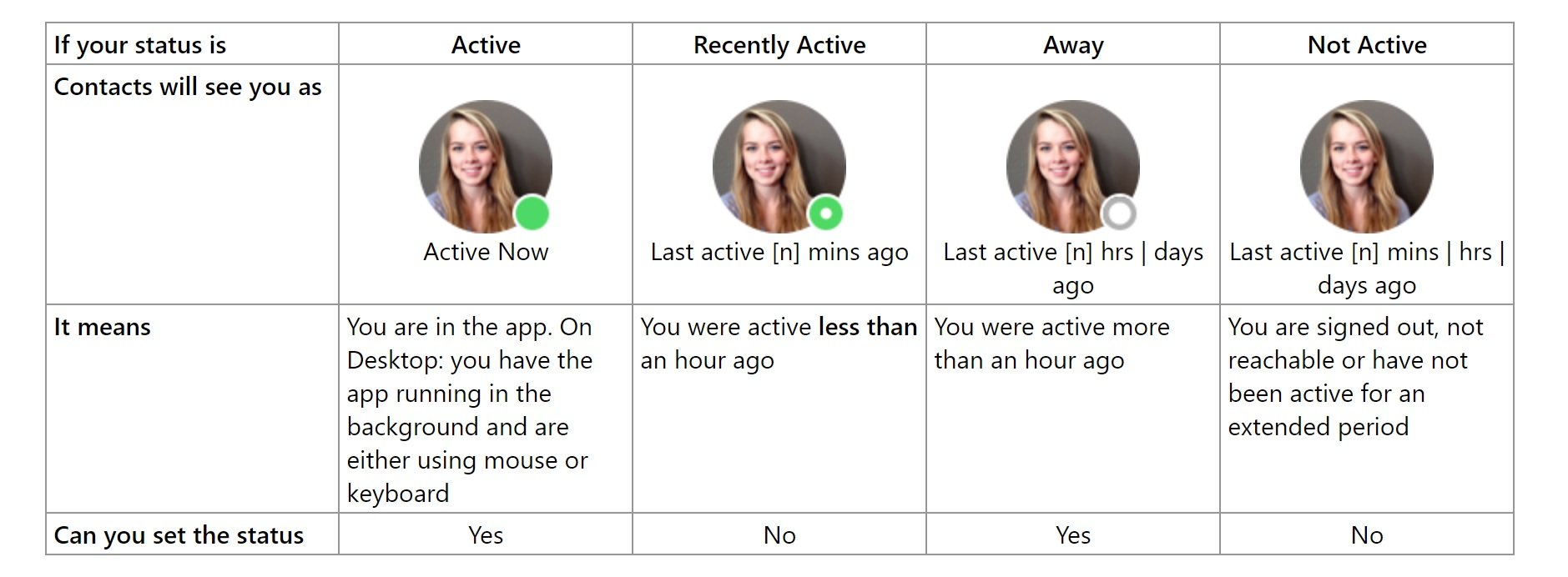Skype once again giving presence controls an overhaul
User feedback has prompted the Skype team to give its presence controls another look.

In its latest move to address a storm of feedback from Skype users, Microsoft is revamping its presence controls once again. If this is giving you a small case of déjà vu, it's because the Skype team did something similar in October of 2017. But this time, Microsoft says it has combed through user feedback to produce a new lineup of four presence states that are intended to give you more control over when you appear active.
You all have been asking for this: A major review of the S7 to S8 presence model. We have been at this deeply, done lots of testing and HOURS of internal meetings. It is much more complex than Copy/Paste S7. Prelim feedback please! https://t.co/JsRYpAHZjSYou all have been asking for this: A major review of the S7 to S8 presence model. We have been at this deeply, done lots of testing and HOURS of internal meetings. It is much more complex than Copy/Paste S7. Prelim feedback please! https://t.co/JsRYpAHZjS— peter skillman (@peterskillman) September 20, 2018September 20, 2018
Here's a look at how the new presence states break down:
- Active: You are in the app. On Desktop: you have the app running in the background and are either using [the] mouse or keyboard.
- Can you set the status? Yes.
- Recently Active: You were active less than an hour ago
- Can you set the status? No.
- Away: You were active more than an hour ago.
- Can you set the status? Yes.
- Not Active: You are signed out, not reachable or have not been active for an extended period.
- Can you set the status? No.
In the case of the latter three statuses, Skype will show the time since you were last active as well.

Things go beyond these four basic presence displays, however. You'll also be able to hide your presence, which will continuously show you as "Not Active" to your contacts. The downside is that you also won't be able to see others' presences when you choose to hide your own.
A new "Quiet Mode" will also be available as a more pleasant replacement of sorts for the current "Do Not Disturb" status. "Many users shared that they found the Do Not Disturb status rude and preferred to sign out to minimize interruptions," Microsoft says. "We plan to have a new feature that we believe is a subtler but better way to handle unwanted interruptions." Quiet Mode works by silencing incoming messages and calls, and you still have the option to set your status to "Do Not Disturb" to let contacts know that you aren't responding to messages.
Finally, in addition to all of the above options, you'll also be able to use status messages such as "Working remotely" and "Commuting" to communicate whether you're reachable or if they might expect a delayed response.
These new presence features are in testing with Insiders and will eventually roll out to everyone, Microsoft says. They come alongside a change to the Skype mobile app that let you save a new number in skype from contacts or the dial pad. You'll soon be able to add and edit existing Skype contacts' numbers as well.
All the latest news, reviews, and guides for Windows and Xbox diehards.
Even more! Hi Skype Fans: We heard you and agree this is long overdue. You'll soon be able to easily save a new number in Skype from Contacts or the Dialpad. Coming soon after that, you'll be able to add and edit your existing Skype contacts' numbers too. Better? pic.twitter.com/41Lv3QNUrLEven more! Hi Skype Fans: We heard you and agree this is long overdue. You'll soon be able to easily save a new number in Skype from Contacts or the Dialpad. Coming soon after that, you'll be able to add and edit your existing Skype contacts' numbers too. Better? pic.twitter.com/41Lv3QNUrL— peter skillman (@peterskillman) September 20, 2018September 20, 2018
These moves are all part of a broader effort by Microsoft to take a step back and address outcry from Skype users over some of the more controversial changes in the modernized Skype version 8. Other changes coming down the line include split view, improved privacy settings, and more.

Dan Thorp-Lancaster is the former Editor-in-Chief of Windows Central. He began working with Windows Central, Android Central, and iMore as a news writer in 2014 and is obsessed with tech of all sorts. You can follow Dan on Twitter @DthorpL and Instagram @heyitsdtl.
